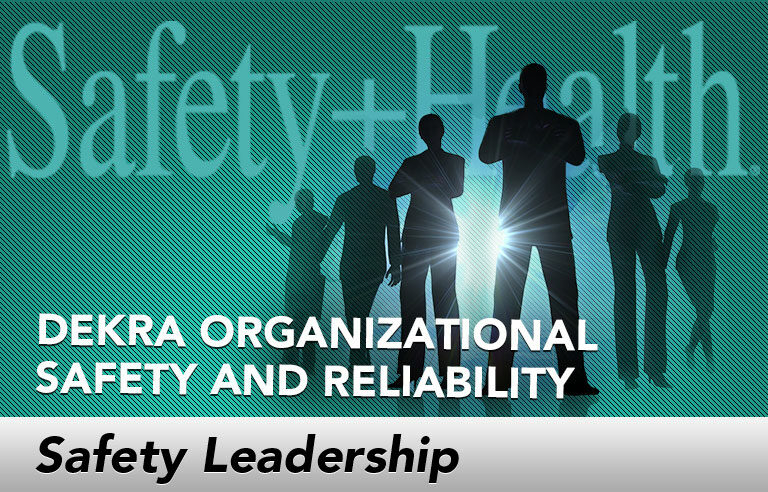Safety Leadership: Driving in the safe brain lane

Editor’s Note: Achieving and sustaining an injury-free workplace demands strong leadership. In this monthly column, experts from global consulting firm DEKRA Insight share their point of view on what leaders need to know to guide their organizations to safety excellence.
One-third of all on-the-job fatalities in the United States involve motor vehicles, according to the National Safety Council. Combine that with the driving deaths outside of work and you have about 40,000 people dying every year behind the wheel. Needless to say, driving safety is a huge problem. Thankfully, neuroscience is revealing a possible solution: our brains. These five brain-centered hazards, when understood, can help make driving much safer:
1. The expectations bias
Some scientific studies estimate that we make as many as 130 decisions per mile while driving.1 To make that many decisions that quickly, our brains set expectations for what we should see and experience on our drive, and send our eyes on “looking missions” to confirm those expectations. The problem is that the brain will only go seek what we send it to look for and, as a result, we may not be able to react quickly enough when the unexpected happens.
The key to overcoming this expectation bias is being more proactive with our observations while driving. By doing so, we may perceive new hazards faster and apply proactive maneuvers. The presence of these proactive maneuvers defines a safe trip, not simply the absence of a crash.
2. Seeing is suspect
How many times have you seen a driver nearly swerve into the path of an oncoming motorcyclist? That’s because our seeing is suspect. Our eyes work like a flashlight beam. We have a three-degree cone of central vision (think visual acuity or 20/20 vision). They shine their focus on a relatively small field of vision and ignore what can be a bigger, more obvious object. Being aware of this can make you safer behind the wheel as you can start scanning your field of vision more completely and routinely.
3. Automation in action
We do a lot of our driving on “autopilot,” which is the brain’s mechanism for conserving energy. In fact, anytime we do a routine task, we are at serious risk of this hazard. This also might be the reason why we may all be unable to recall details of our drive home or to work. You can avoid this exposure by putting conscious attention into your drive each time you get behind the wheel.
4. Divided attention or distractions
Driving distractions come in three main forms:
Visual: Taking your eyes off the road to do something else, such as read a billboard
Manual: Taking your hands off the wheel to drink your coffee
Mental: Daydreaming or doing social rehearsals in your mind (“Here’s what I’m going to say to my boss when I get into work”)
These distractions use cognitive energy that could be better applied to concentrating on driving safely. Scientific research tells us our brains cannot do two cognitive-heavy tasks simultaneously, so we can eliminate this exposure by eliminating the distraction.
5. Micro-sleep mishaps
Functional MRIs of the human brain reveal that having less than five hours of sleep makes us as much as 490 times more likely to be involved in a motor vehicle crash.2 To be fully functional, we need deep sleep to truly recharge our brains. Rolling down the window or drinking coffee while driving isn’t going to replace the need for deep sleep. When your brain doesn’t get enough deep sleep, it goes searching for it through micro-sleeps. That’s when your eyes are open but your brain is asleep. Organizations can assist by adjusting work schedules to allow for adequate amounts of rest and recovery, and you can take charge by getting enough deep sleep.
References
1. Aaron, JE and Strasser, MK. “Driver and Traffic Safety Education: Contents, Methods, and Organization,” New York: Macmillan Inc., 1966.
2. Lombardi, D. et al. “Daily sleep, weekly working hours, and risk of work-related injury or incident.” Paper delivered at ICOH 19th International Symposium on Shiftwork and Work Time.
This article represents the views of the author and should not be construed as a National Safety Council endorsement.
 Larry R. Russell, CSP, is a principal consultant for the Brain-Centric Reliability System at DEKRA Organizational Safety & Reliability.
Larry R. Russell, CSP, is a principal consultant for the Brain-Centric Reliability System at DEKRA Organizational Safety & Reliability.
Direct to your inbox: Sign up to be notified in email about new "Safety Leadership" columns.
Post a comment to this article
Safety+Health welcomes comments that promote respectful dialogue. Please stay on topic. Comments that contain personal attacks, profanity or abusive language – or those aggressively promoting products or services – will be removed. We reserve the right to determine which comments violate our comment policy. (Anonymous comments are welcome; merely skip the “name” field in the comment box. An email address is required but will not be included with your comment.)

